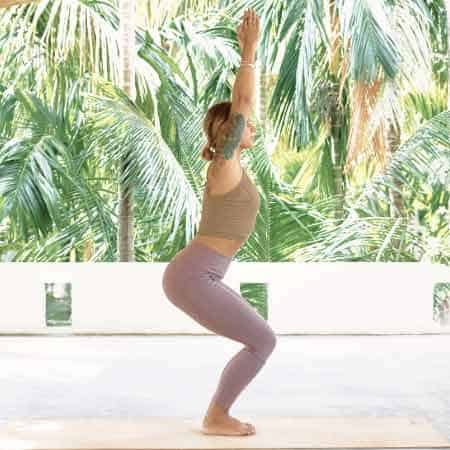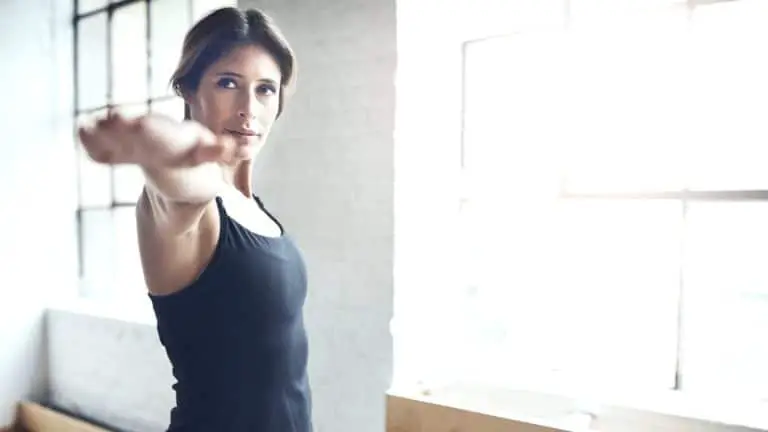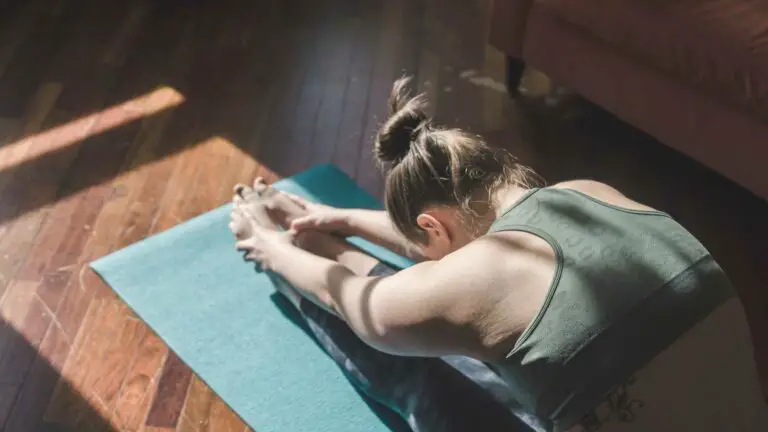If you are looking to make your yoga practice a daily habit, you may be wondering how exactly you should begin. With so many styles and options, it can be hard to know right away what will be best for you. Is it best to practice different flows every day, or would you benefit more from sticking to the same asanas and sequence day in and day out?
For some, the same yoga routine every day provides structure and targeted therapeutic benefits. For others, a changing routine gives variety and balanced whole-body practice. Whether you should do the same yoga routine every day or mix different styles of yoga depends on your body and your personal needs.
In this article, we will look at the pros and cons of each type of practice. We will see the benefits of the same daily routine as well as what should be carefully considered if practicing in this way. We will also see what benefits a continually changing routine has to offer as well.
Pros of the Same Yoga Routine Everyday
There are various reasons why it is a great idea to have the same yoga routine every day. In fact, in the ancient yogic tradition, this was the most common way to practice yoga. Students would sometimes only be given a single pose to practice and only learned new poses when they were deemed ready by their teachers. This method is similar to how Ashtanga yoga is still taught today.
However, there are plenty of options to choose from in the modern world when it comes to how you want to practice yoga. The benefits of the same daily practice can be dependent on your age, physical condition, and general mental state. Let’s see for what kinds of people the same daily yoga practice is advantageous.
Provides Structure and Routine

For some people, having a practice that is predictable and will not surprise them with new poses is very comforting. It can feel grounding to come to the mat each day to practice poses that you know how to do and how they might feel in the body. In a chaotic world where so many things are out of control, some people prefer to have a place where they can experience predictability.
If you suffer from anxiety and overthinking, you might be someone who benefits from the same daily practice. By engaging with yoga in this way, you will eliminate the unknowns that can heighten anxiety. It is common for people with anxiety to get wrapped up in what the mind is telling them, and when anxiety is high, the mind may try to talk someone out of the day’s practice.
The practice itself will help soothe the anxiety in the short term and perhaps allow the individual to relate to it differently in the long term.
Serves As Physical Therapy
You may be coming to yoga because of specific pains in your body. Yoga can be a very therapeutic practice for both the body and mind, helping the practitioner engage in their own self-healing. However, to make the most of the practice for your particular needs, you will have to identify which poses are designed to help your target areas.
Wherever your pain may be, it would be most suitable for you to find the asanas that will help ease this pain and practice them daily. Many people are turning to restorative yoga for this reason. By engaging in a daily practice designed to nourish and heal the body, people can gently recover from injuries. Additionally, people living with chronic conditions are able to maintain a daily therapeutic practice if they approach yoga from this angle.
The Change Is You
Another reason that the same daily practice appeals to many is the ability to have an unchanging variable, a constant. If the poses do not change, but the practice feels different on different days, why could this be? The answer is you. When we come to the mat daily to perform the same asanas, we are able to notice what is changing with our bodies and minds more closely.
In this type of practice, we minimize the change in external factors in order to allow greater self-awareness. This allows the practice not just to be a physical measure of how the body is feeling or changing, but a mental one as well. There may be poses you never thought were possible, but you become able to do them with time and practice.
This process helps us challenge our existing limiting beliefs and believe in what we do not yet know how to accomplish.
More Space for Mindfulness
When you are practicing the same asanas every day, you are able to be more present with the experience. Whenever you practice a new asana, your mind might be busy wondering if you’re doing it right, not allowing you to relax just yet into the pose. However, when you get the hang of how to move into the asana and breathe through it, you are able to have a different experience with it.
By practicing the same asanas every day, the practitioner can focus more on the experience than the shape. They can let the thinking mind go and become absorbed in practice. It can become a type of moving meditation, where each breath and each position is a way to be present and mindful.
Deeply Discover Each Pose
As you practice the same poses day after day, moving mindfully and meditatively in your practice, you will find another beautiful benefit. That is to experience each physical asana more deeply. As you become so familiar with the asanas, you will be able to fine-tune your alignment and deeply experience the sensations they bring up in your body.
As your body opens and you are able to practice the poses more fully, you will experience how they feel different as your body changes.
This exploration will give you a deep and meaningful relationship with the asanas you practice. It will also bring you more awareness of your body and how different movements make it feel. You may hear yogis and yoga instructors talking about listening to the body. By practicing in this way, you will develop your own natural ability to know and listen to what your body is telling you.
This way of practicing can be applied off the mat as well. As you realize how the same pose feels different every time you come to it, you may be able to enter familiar situations in your daily life with a new awareness. You have brushed your teeth thousands of times, but if you bring your complete presence to the activity, can it feel like a new experience? The answer often is yes. Applying these lessons of awareness can make life more meaningful in many ways.
Cons of the Same Yoga Routine Everyday
If you are thinking about starting a daily yoga practice built around the same asanas each day, there are a few things to keep in mind. Doing the same practice every day can have disadvantages if it is not carefully planned and thoughtfully executed. Let’s take a look at these now.
Lack of Correct Sequencing

The sequencing, also known as the order of poses, is very important for the health of your body. For example, backbends, forward folds, and spinal twists need to be arranged in a particular way in order to avoid injury and to maximize spine health. Additionally, good warm-up asanas are necessary to prepare the body for the practice that is to come.
If you are following a sequence laid out by a respected tradition or created by a knowledgeable yoga professional, you should not have to worry about sequencing. However, if you are choosing your own poses for your daily practice, it is important to keep proper sequencing in mind.
If you are unsure where to begin, you can follow some online videos for at-home yoga practices. These typically follow a flow designed to nurture the body and provide it with what it needs.
Risk of Injury
If you are doing the same poses each day, there are a few reasons why you may be putting yourself at more of a risk for an injury. The first has to do with sequencing. If you follow a sequence that puts your spine or different muscle groups at risk, this could be very dangerous. Repeating this imperfect sequence raises your risk for injury much more than if you were just to do it a single time.
Second, let’s say that you are doing a properly sequenced routine. Even if your poses flow correctly and compliment each other to provide relief in key areas of the body, using the same muscles over and over is putting you at a higher risk for injury. You may be strengthening some areas of your body over and over while ignoring the complementing muscles completely.
If you continue in this way over time without seeking a balance for your body as a whole, you risk injuring yourself. It is essential to listen to your body and if you start to feel unbalanced as you progress with your practice, consider adjusting your practice to give your body what it is craving.
Mental Impact
Doing the same routine each day, as we explored above, is an amazing way of checking in with your body and exploring what is changing. This check-in may feel great when you see yourself making progress or reaching a level in a familiar pose. However, challenges may arrive when you have the opposite experience.
Every day when you come to the mat, you are engaging in a different yoga experience. Even if you felt so strong and confident in one asana yesterday doesn’t mean you will feel the same way in it today. It can be frustrating when we experience what might be considered “regression” in our practice. Perceived setbacks might be discouraging to some. It might even cause them to think about quitting their practice because they perceive themselves as “getting worse.”
The key to this is not to think of it as a step back but as a chance to accept the body where it is at that particular moment. You simply cannot move the same way you moved yesterday, and that’s completely okay. Tomorrow will bring a brand new experience if you continue to show up on your mat.
This, theoretically, is a wonderful teaching moment, but it can be a frustrating experience when it happens. As you continue to learn to be more and more accepting of your own body and journey, this will transform from frustration into an opportunity for further self-growth.
Boredom
For many people entering the yoga practice from other sports, where the emphasis is placed more on doing and achieving, it can time to adjust to this practice’s purpose. Yoga is much more about experiencing the sensations of a particular pose as opposed to achieving a particular shape.
For some, doing the same practice day after day feels boring. They may be anxious to move on to the next pose because they know what is coming next. This anxiousness may prevent them from truly being in the moment and being present with the experience of the current position.
However, like the previous downside we mentioned, this is actually an opportunity. Instead of giving in to the boredom and letting your mind race ahead, asking, “when will we move to the next pose?” you have a chance to be present. You have an opportunity to transform your mindset. Instead of anticipating the future, you can focus on what is happening right now.
Missing Out on Full Benefits of Yoga
While there are many reasons that practicing the same routine every day is beneficial, at the same time, you will be missing out on the unique things different styles of yoga have to offer. For example, by pairing a few days of a vinyasa practice with a few yin or restorative sessions each week, you are giving your body different yogic benefits.
Some practices will energize the body. For example, Vinyasa flows will heat up the body and allow energy to flow more freely through you. If you are only practicing this type of heating practice, day after day, you are missing out on the benefits of a cooling practice.
For example, yin yoga or a restorative type of yoga will offer a great complement to these hotter flows. They give your body a chance to rest and restore, and you will feel a great calm and sense of release when you finish these types of classes.
Yin yoga is even named after the concept that there should be dualities in yoga practice and life. As you engage in yang activities, such as vinyasa practices, you should also bring in some yin to balance it out. If you are practicing, in the same way, every day, you will miss the opportunity to allow this duality to exist in your life.
How Should I Practice?
If, after reading through these pros and cons, you’re not sure if you should or shouldn’t have the same yoga practice every day, let’s take a look at a few examples to help clarify.
If you are a young yogi with lots of energy looking for a higher intensity practice, you could benefit more from a varied routine. You can practice some vinyasa flows for energy and strength-building. For balance, you can include some restorative days in order to prevent yourself from injury or burn out.
If you were really interested in having the same daily practice, you could consider Ashtanga. This branch of yoga is a physically challenging practice that will allow you to engage with the same asanas day after day.
If you are an older yogi who is coming to the practice to move your body in a nurturing way, or perhaps in order to heal specific areas, you could consider a gentle daily routine that is similar day after day. You can be sure your sequence includes the poses you need to therapeutically target the parts of your body that require extra care and nurturing.
Make sure your sequence includes proper combinations of poses and gives you a chance to warm up and cool down. If, after practicing for some time, you feel something is off about your daily practice, consider adjusting your routine to keep up with the needs of your body.
Final Thoughts
There are so many benefits to practicing yoga in any form. However, if you choose to practice the same asanas each day, you will be able to access a beautiful depth that may not be as accessible with a constantly changing practice. Simply keep in mind how to avoid injury and how to properly sequence your poses in order to enjoy all of the benefits this practice has to offer.








